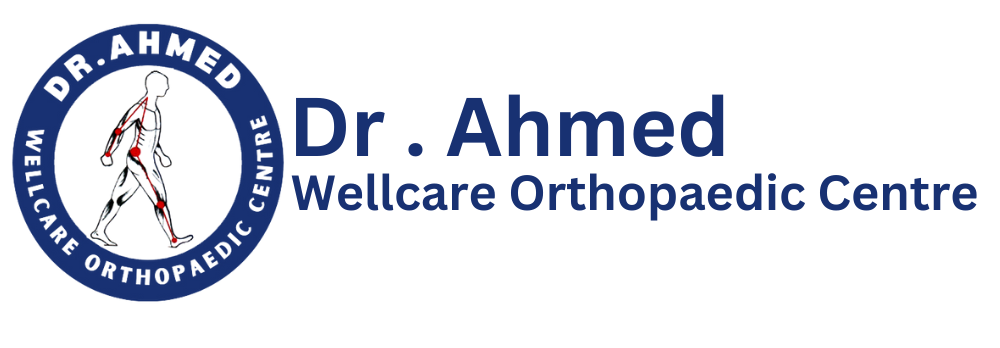Understanding Disc Degeneration
Disc degeneration is a progressive condition affecting the intervertebral discs, which serve as the cushion-like structures between the vertebrae in the spinal column. As individuals age, these discs undergo various pathological changes, leading to a decrease in their size, elasticity, and overall function. Multiple factors, including aging, genetics, and mechanical stress, contribute to this degeneration. Over time, the biological mechanisms responsible for maintaining disc health—such as hydration and cellular repair—diminish, resulting in a cascade of degenerative processes. For more information on disc degeneration, visit Dr Ahmed Wellcare Orthopaedic Centre.
The symptoms of disc degeneration can vary widely among individuals. Common manifestations include localized pain, stiffness, and reduced mobility. These symptoms might also exacerbate due to underlying conditions such as herniation or spinal stenosis. Often, people experience increased discomfort during movement or prolonged periods of inactivity. Depending on the location and severity of the degeneration, the condition may lead to symptoms of sciatica. These symptoms include radiating pain in the leg, numbness, or tingling, indicating nerve involvement.
The progression of disc degeneration often follows a predictable pattern, starting with changes in the disc’s hydration levels, leading to a loss of height, which reduces its shock-absorbing capabilities. In degenerated discs, the annulus fibrosus, the outer layer, can become weakened, making it prone to tears and bulges. Disc degeneration is particularly prevalent in older adults. However, younger populations may also experience it due to lifestyle factors or occupational hazards. Untreated degenerative disc disease can lead to chronic pain, reduced quality of life, and potential disability. This highlights the importance of timely intervention and exploring treatment options. Nucleolysis shows promise for treating disc-related conditions.
What is Nucleolysis Injection?
Doctors use nucleolysis injection as a minimally invasive treatment to address disc degeneration and related conditions. This innovative procedure targets the intervertebral discs, which can become painful and dysfunctional due to degeneration or herniation. By using nucleolysis, physicians aim to alleviate pain, improve function, and avoid the potential complications associated with traditional surgical options.
There are two primary types of nucleolysis: chemical and thermal. Chemical nucleolysis involves the injection of a specific enzyme, such as chymopapain, directly into the affected disc. This enzyme assists in breaking down the nucleus pulposus, the gel-like center of the disc, thereby reducing its volume and relieving pressure on the surrounding nerve structures. Conversely, thermal nucleolysis utilizes heat generated by radiofrequency energy to decompress the disc, helping to alleviate pain and restoring normal function.
The effectiveness of nucleolysis for disc-related conditions stems from its ability to directly target the source of pain without the need for invasive surgery. Unlike traditional surgical methods, which often require longer recovery times and have a higher risk of complications, nucleolysis typically allows for quicker healing and a return to daily activities. As a result, patients may experience significant relief from sciatica and other related symptoms through this less invasive technique.
By breaking down the problematic components of the disc, nucleolysis injections aim to not only provide symptomatic relief but also enhance the overall quality of life for patients suffering from disc-related conditions.
Efficacy of Nucleolysis Injection: Current Research and Findings
The effectiveness of nucleolysis for disc-related conditions has garnered significant attention in recent years, particularly in the realm of pain management for patients suffering from disc degeneration. Numerous studies have sought to evaluate the impact of nucleolysis injections on pain reduction, functional improvement, and overall patient satisfaction. The findings from these studies provide valuable insights into the clinical utility of this minimally invasive procedure.
Recent clinical trials have demonstrated promising results regarding the pain alleviation offered by nucleolysis injections. For instance, a study published in a prominent medical journal reported that over 70% of patients experienced substantial pain relief following the procedure. Many experts attribute this benefit to the injection’s ability to reduce pressure within the intervertebral disc, which decreases nerve irritation and inflammation. Furthermore, patients reported improvements in functional capacity, with many returning to their daily activities with reduced discomfort. Studies have particularly highlighted the efficacy of nucleolysis injection in alleviating symptoms of conditions like sciatica, underscoring its potential as a viable alternative to traditional surgical interventions.
Researchers have conducted comparative analyses to assess the effectiveness of nucleolysis injections against other treatment modalities, such as corticosteroid injections and surgical options. Many studies have observed statistically significant improvements in pain scores and functional measurements among patients receiving nucleolysis injections.
Overall, the current body of research suggests that nucleolysis injections can enhance patient outcomes in the management of disc degeneration and associated pain.
Potential Risks and Considerations
Nucleolysis injections have emerged as a promising treatment for disc degeneration, especially for conditions like sciatica. These conditions can significantly impair a patient’s quality of life. Proper patient selection is crucial; not all individuals are suitable candidates for nucleolysis.
Recovery times can differ based on individual factors. However, most patients can return to normal activities relatively quickly, typically within a few days to weeks. Understanding these elements is key to maximizing the effectiveness of nucleolysis for disc-related conditions while minimizing risks.
In conclusion, nucleolysis injection can offer significant benefits for conditions like sciatica. This comprehensive approach will help ensure that patients receive the best possible outcomes from their treatment.
Frequent Asked Questions ?









